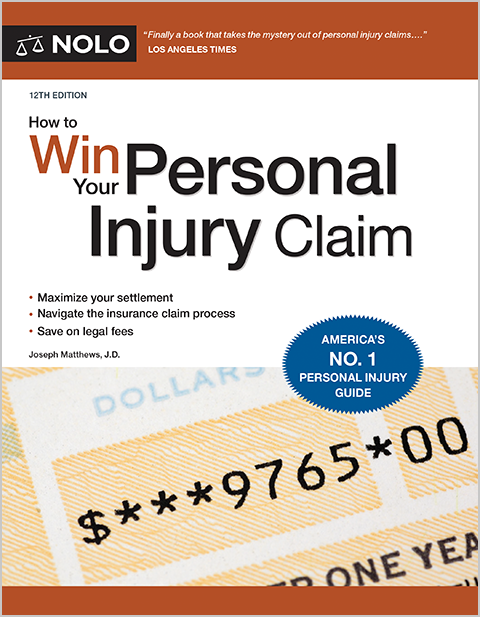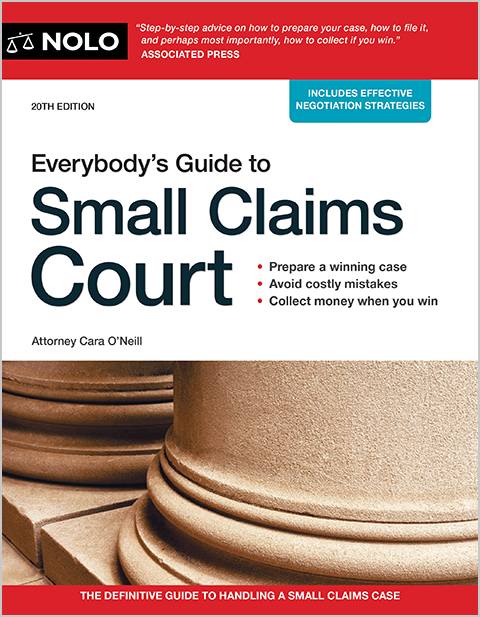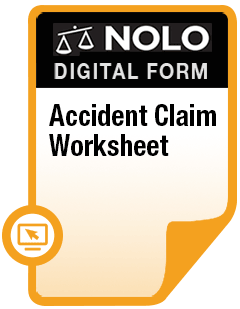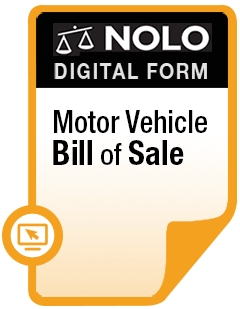The process of figuring out who’s at fault for a t-bone auto accident starts at the crash scene. Learn about proving fault and damages in these kinds of cases.
If you've been involved in a side-impact collision (commonly called a "t-bone" or "t bone" car accident), proving who was at fault can be complicated. The process starts at the scene of the wreck but probably won't end there. You could be in for a fight, and you'll want an experienced lawyer on your side.
Common Causes of T-Bone Car Accidents
T-bone car accidents aren't unique, but they can be uniquely dangerous. Let's begin by finding out how they most often happen. Then we'll take a look at why they can be so dangerous.
Most t-bone collisions happen in one of three ways:
- at a four-way intersection
- while turning left across oncoming traffic, and
- when backing out of a space in a parking lot.
Four-Way Intersection
Driver 1 enters a four-way intersection (say, traveling east) at the same time that Driver 2 enters the intersection (say, traveling south), and the two cars collide. These accidents usually happen because of driver error—one driver misses or ignores a stop sign or traffic light, or tries to "beat" a traffic light.
Left Turn Across Oncoming Traffic
Driver 1 turns left across oncoming traffic at the same time that Driver 2 enters the intersection. Driver 2 hits Driver 1 on the passenger side. Here too, driver error is the cause: Driver 1 misjudges the speed or distance of Driver 2.
Backing Out of a Parking Space
Driver 1 is backing out of a space, usually in a parking lot. Driver 2 strikes Driver 1. In most cases, parking lot accidents are caused by a combination of factors: Driver 1's vision of cross traffic is blocked by adjacent cars and Driver 2 is driving too fast.
Why T-Bone Accidents Can Be Uniquely Dangerous
When your car gets hit in the front or back (in a rear-end accident, for example) there are several feet of steel, bumper, engine, trunk, and seats protecting you. Modern cars are designed so that these parts of the car absorb the collision forces and, where possible, deflect those forces away from the occupants. By contrast, when your car is t-boned and you're seated on the impact side, there's only a door and a window between you and the striking vehicle.
The most important factors in t-bone crash injury severity are:
- the size and speed of the striking vehicle, and
- the point of impact relative to an occupant's position.
Simply stated, the bigger the striking vehicle, the faster it's moving, and the closer to you it hits, the greater the likelihood that you'll be severely injured. In 2020, 5,475 vehicle occupants died in side-impact car accidents—23% of all car-accident fatalities that year.
Proving Who Was at Fault in Your T-Bone Crash
Sometimes it's easy to figure out who's to blame when you've been t-boned. Maybe the other driver was distracted and ran a red light. Or in the heat of the moment, the other driver might admit responsibility ("I'm so sorry! I didn't see the light!").
But in most cases, liability will be disputed. How do you prove who was at fault in your t-bone car accident? The short answer is: By gathering as much evidence about the collision as possible.
Of course, the evidence you collect will depend on the severity of the crash and your injuries. If you suffered only minor injuries, you'll probably get some photos of the scene and the vehicles, the police report, witness statements, and your medical records and bills. If the accident caused you serious injuries, you (or more likely, your lawyer) will want to get more of the evidence we list below.
It Starts at the Scene of the Accident
Here are the things you should do at any crash scene—t-bone or otherwise:
- check for injuries and call 911 to get medical help if needed
- call the police if anyone is injured, or if property damage exceeds the amount set by state law (typically $1,000, but might be less)
- get driver's license, insurance, and contact information for all other drivers
- get contact information for all other vehicle occupants and witnesses, and
- if you can, gather evidence at the scene as described below.
What Not to Do at the Accident Scene
Don't leave the scene of the accident until the police officer in charge tells you it's okay. (If you don't call the police or the police don't come, don't leave the scene until you've exchanged contact, license, and insurance information with the other drivers.) Be careful not to interfere with the work of first responders. And watch what you say.
If you're concerned about possible criminal charges (like a DUI), then you should politely decline to answer questions without your lawyer being present. Otherwise, answer first responders' questions truthfully and factually. Don't volunteer information. And don't admit responsibility or apologize to others at the scene, even if you think the crash was your fault.
Gathering Evidence at the Scene of the Accident
At the accident scene, take pictures of:
- the vehicles involved, including their final resting places and any damage to them
- damage to stationary objects like curbs, light poles, traffic signs, and buildings
- skid or scuff marks on the road surface
- all points of impact, including the primary impact point and all secondary points of impact with other vehicles or stationary objects
- crash debris, including any fluids like oil or transmission fluid, and
- perspective views showing the view each driver had as they approached the impact point.
You'll also want to:
- make notes of anything you hear about the crash or what might have caused it, whether from other drivers or passengers, witnesses, first responders, or others
- get the name and badge number of each responding police officer (if more than one officer was on the scene, be sure to get the name and badge number of the officer in charge)
- ask how you can get a copy of the police report, once it's finished
- record the year, make, and model of each involved vehicle
- measure skid and scuff marks and the distances vehicles traveled post-impact, even if your measurements are only approximate
- note the size and location of crash debris fields
- look for security or surveillance cameras, and
- be sure you record weather, lighting, and road conditions at the time of the wreck.
Gathering Evidence After Leaving the Scene
Here's a list of evidence to collect after you've left the scene. We've divided the list into two parts. The first part is evidence you'll want in every case. The second part is evidence you might want if the facts of the case merit the effort and expense.
Evidence You Need for Your Case
In every case, you should get:
- a copy of the police report, including any diagram(s) of the accident scene
- photos of your injuries
- your medical records and bills
- witness statements, and
- video footage from any surveillance or security cameras.
In addition, keep a diary or similar written record of the crash, your injuries and medical treatment, and your recovery. Be sure to discuss all of your injuries, both physical and emotional. Note that you might have to disclose your diary to the other side if your case ends up in a lawsuit, so make sure your entries are truthful and factual.
Other Evidence You Might Want for Your Case
Depending on the potential value of your case, you (or more likely, your lawyer) might want to:
- buy and store vehicles involved in the crash
- buy and store stationary objects like light or traffic signal poles involved in the crash that have been removed from service
- ask that other stationary objects involved in the crash be preserved in their post-crash condition, if possible
- get data from automated streetlights and traffic signals
- take additional photographs and videos of the crash scene, including driver perspective and overhead panoramic views
- if the weather was a factor, get weather reports for several hours leading up to the crash from a weather service, and
- if road conditions were a factor, contact law enforcement or state or county road agencies to get road condition information.
Find out more about things to do after a car accident.
Damages and Compensation in a T-Bone Accident Settlement
The damages you can collect in a settlement (or a trial) will depend on a number of factors, including the nature and extent of your injuries and the medical treatment you receive. Let's begin with a quick review of the injuries that are likely to result from a t-bone collision.
Common Injuries in T-Bone Car Accidents
Most t-bone accident injuries result from what's known as blunt force trauma. In a nutshell, these injuries happen when an occupant comes into contact with part of the striking vehicle, or part of their own vehicle like a window, door, center console, or some other component.
Common injuries include:
- crush injuries to the chest, abdomen, or pelvis, including damage to blood vessels, organs, and broken bones
- injuries to the head and brain, ranging from minor injuries like a concussion to skull fractures and closed or open head injuries, and
- neck and back injuries like whiplash, vertebral fractures, or spinal cord damage.
Damages in a T-Bone Car Accident
In most t-bone crash cases, you can recover two kinds of damages: Economic damages (also called "special" damages) and noneconomic damages (also called "general" damages). In rare instances, you might be awarded punitive damages.
Economic Damages
Economic or special damages compensate you for things like medical bills, lost wages, the cost of medical equipment, vehicle damages, and other out-of-pocket expenses. These damages are generally easy to quantify in dollars.
Proving past losses is straightforward. For instance, your medical bills will prove your medical expenses, and a letter from your employer's payroll office will document your lost wages. If you want to claim future medical expenses or lost wages, though, you might need expert witnesses to prove those losses.
Noneconomic Damages
Noneconomic or general damages are intended to make you whole for intangible injuries like pain and suffering, emotional distress, loss of enjoyment of life, and disability or disfigurement. Proving these damages can be difficult because they're harder to reduce to dollars.
So how do you put a value on these injuries? In most cases, lawyers and insurance adjusters use a formula that applies a multiplier to your total past and future medical expenses. In a typical personal injury case, the multiplier will be a number between 1 and 5. Here's how it works.
Say your total medical expenses are $25,000. To arrive at a value for your pain and suffering and emotional distress, you decide to begin negotiations with a multiplier of 3. $25,000 x 3 = $75,000. That's the value of your noneconomic damages.
The multiplier used in any case will depend on factors such as the nature of your injuries, the difficulty of your treatment and recovery, and whether you have any permanent disabilities. If the case involves catastrophic injuries like severe brain damage or paralysis, formulas and multipliers probably won't be involved. Calculating damages in a case like that will be complex, and you'll need an experienced car accident attorney to help you value your losses.
Read more about the factors that are considered in valuing your personal injury claim, such as the kinds of injuries you suffer and the medical treatment you receive.
Punitive Damages
In rare cases, if you can show that the other side acted maliciously or was grossly negligent, you might be awarded punitive damages. Unlike economic and noneconomic damages, punitive damages aren't designed to compensate you for your injuries. Instead, they're intended to punish a wrongdoer and deter others from behaving similarly in the future.
Is There an Average T-Bone Car Accident Settlement Amount?
By now, you've likely figured out that there's really no such thing as a typical t-bone car accident case or typical t-bone accident injuries. Every case involves different facts—vehicles, impact speeds, occupants, occupant sizes and positions, and road and weather conditions. All will vary from one case to the next. These factors and many others will play a role in the severity of the accident and the resulting injuries.
For the same reasons, no two injuries will be alike. So the fact that a closed brain injury case settled for millions of dollars tells you little or nothing about the value of your closed brain injury claim, or any other case. The best way to find out how much your case might be worth is to consult with an experienced car accident lawyer.
When You Should Hire a Lawyer
Sometimes it's easy to tell who's at fault for a car wreck. In a rear-end collision, for example, there's usually not much room for argument. The same can't be said, though, in many t-bone car accident cases.
If the police come to the scene, the responding officer might not make a determination of fault in the accident report. Worse yet, the officer could make what (to you anyway) are incorrect factual or fault determinations. Jurors find police officers to be impartial and credible witnesses in car wreck cases. So if you find yourself on the wrong end of an officer's findings, you've got an uphill battle on your hands.
Even if a police officer doesn't make any findings that go against you, if different witnesses say different things, it won't take much for the other driver to claim that the accident was your fault. When fault is disputed, as it often is, you're putting yourself at a real disadvantage by trying to handle the case on your own.
The same goes if your claim involves significant injuries and property damage because the complexity of a case can make it hard to get a fair settlement without a lawyer. (For more information, read about how an attorney can help.)



